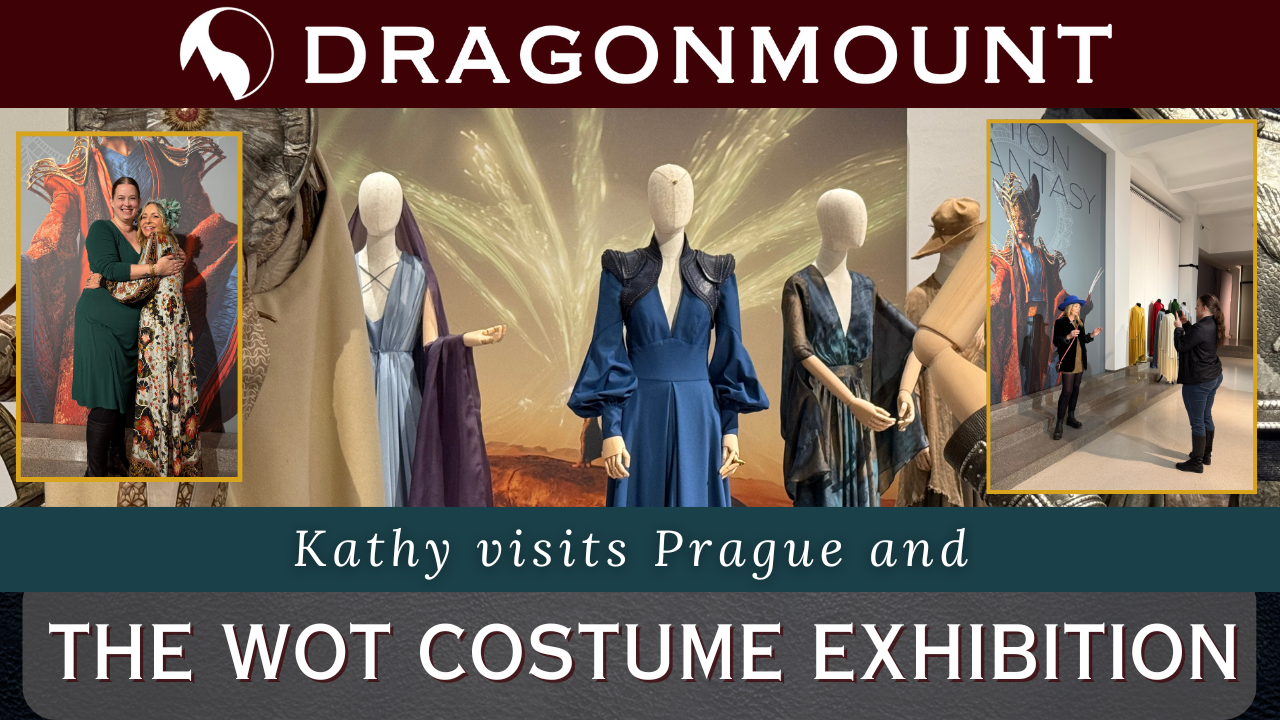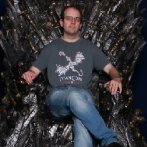News items
The Wheel of Time costume exhibition at Prague's Galerie Manes showcases over 80 breathtaking costumes, offering an unprecedented look at the intricate craftsmanship behind the show.
Read More...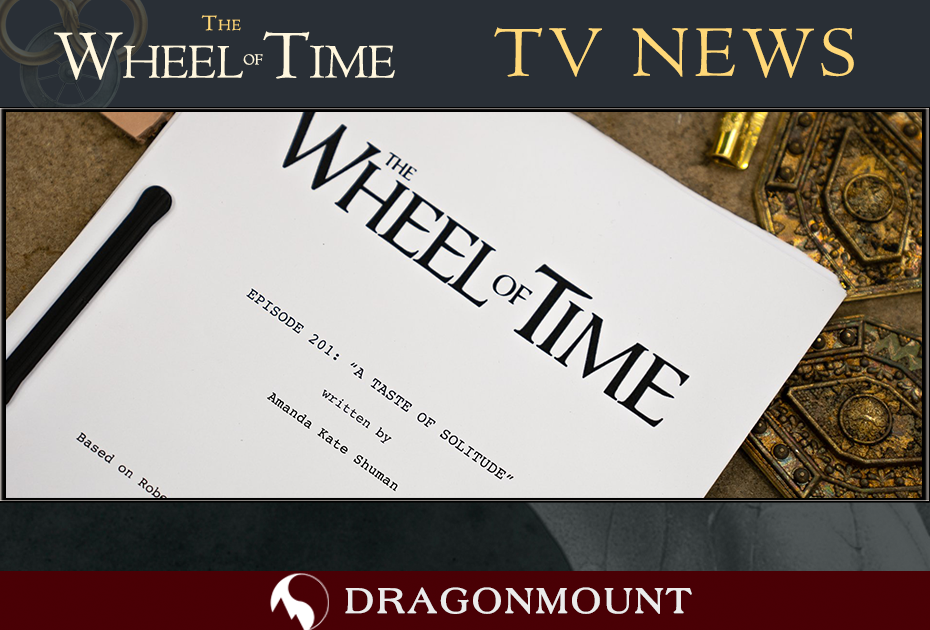
The news broke yesterday that Amazon Prime officially renewed The Wheel of Time for a second season! Rafe Judkins, the showrunner, hinted that the writing staff had already begun writing scripts for season two some time ago, but the confirmation was appreciated. The filming of season one wrapped as well, and there’s speculation the release date may be sometime in the fall of this year. Amidst all the celebration, Rafe Judkins hosted a Q&A session on Instagram. You can read the questions and his responses below: Q: What’s the average running time of each episode? A: Amazon is great because each ep doesn’t have to hit an exact time like you do in network TV. And these eps are epic, so we are clocking in between 50-65 minutes each. Q: Congratulations on S1 wrap!! Blink twice if a trailer is coming soon….. A: (A blushing, wide eyed emoji) Q: Do EF5 actors perform stunts on their own or do they have stunt doubles? A: Everyone on the show has a stunt double, but most of our actors are really amazing with the physical stuff and doing their own stunts. I’m the only one who’s always falling. Q: How are you feeling having wrapped S1? A: To be totally honest, it hasn’t fully him me yet. There’s still so much to be done to get the show ready to air and get S2 shooting, that while I was drinking my celebratory champagne on set after the last shot Tuesday, someone grabbed me to tackle three new problems that had come up and I had to leave ha Q: What character that doesn’t appear in S1 & does appear in S2 are you most excited about? A: Starts with an EL Q: Do you have the plot of all the seasons roughly mapped out? A: Yeah, between Season One and Two we made a rough map of how the series could break down into seasons. It can always change obviously, but important to know where we are going and how we are getting there so we build it right if @amazonprimevideo keeps us around for the long haul ? Q: Will we see the actual weaves of just the end result of channeling? A: You’re going to see if all if you’re a woman who can channel Q: Most difficult part of creating TWOT during a global pandemic. A: The human aspect. We’ve built a family here in Prague with cast and crew and keeping everyone safe has been top priority. Everyone’s ability to adapt and meet the stresses of a time like this has been amazing to watch. Q: How far should we get into the books if we don’t want Season 1 to spoil things for us? A: This question is so cleverly worded to trick me that I have to respond to it out of sheer respect Q: How are you balancing the numerous POVs in the book vs focusing on Rand? A: I’ve always said, we are adapting the whole series not just Eye of the World, and I really think this is an ensemble series, so the first season is as well Q: Will we see forsaken in season 1? A: Some people see Forsaken everywhere Q: Will we see Narg? (crossed fingers emoji) A: Yep Q: Did any of the actors end up becoming fans of the book series after getting cast? A: I’m not going to spoil who, but two of the core cast are in a read off right now, and I think one of them may have finished the series Q: How many “brands” or trollocs did you create for the show? A: We leaned into the books and tried to have the trollocs have as much individual character as possible. My favorite is the one we call Betty Q: Will S2 take us to a lot of new locations? How big can the world get? A: Best thing about Wheel of Time is the world keeps getting bigger and deeper. And we’ve gotta deliver on that in the show Q: Please ask Amazon Prime if they’d do a sweepstakes for a fan to be an extra on the show. A: @amazonprimevide and @thewheeloftime (thinking emoji) Q: Loved the first look at the Trollocs! When are we getting more? A: Sadly there hasn’t been a first look at the Trollocs yet. That was some accidently leaked raw footage. We work so hard to make the show it’s always a shame when you guys see stuff outside the way we have it planned. I’ll tell you one thing, when I met with directors for S2 who’d seen the pilot, they all had one thing to say – “THOSE TROLLOCS???” (Small text to the side: Why does Instagram make the text so skinny. This is driving me crazy) Q: Excited to progressively spiral downwards into raving madness? A: It’s so funny that you think I’m not already there Q: Are you planning a book per season or are there adaptations and inclusion from multiple? A: We have to combine. @madeleine_madden and @joshastradowski would be 45 when we finished otherwise. Q: Will Lan’s cook cloak be featured in the show? A: I love Lan’s cloak in the show. But much like Aes Sedai agelessness, if it’s an effect that’s going to cost a fortune every time a character is on screen, it’s a bad use of our money. Unless you want to see all of S1 in the Winespring Inn. Then you can have color changing cloaks ? Q: Who has been the hardest character to write for so far? A: Perrin is the hardest. His interior monologue in the books is the biggest part of his character, so bringing him out in the show is always something we have to build really consciously. Luckily @marcus_rudda just exudes Perrin every minute so it makes our lives a lot easier (text at the bottom: And thank you @sarahenakamura for teaching me about the text slider. Just in time for the last question) Q: Have you started writing S2? A: Yeah! The awesome S2 writers have been working throughout the year and we already have a bunch of great scripts ready to go.
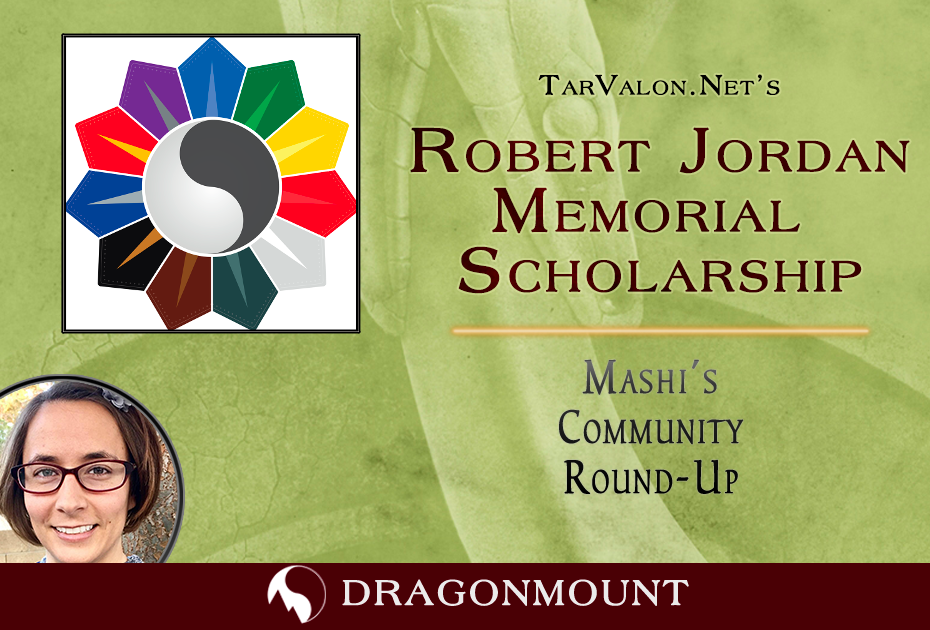
Each year, TarValon.Net awards one recipient with a $500 grant to an accredited college. This year, they will pick two finalists to receive this award. Here is what TarValon.Net has to say about the Robert Jordan Memorial Scholarship: If you'd like to apply, you can use this link. Remember to submit your essay by May 15th!

It appears that we’re going to be getting a lot more Wheel of Time in the future. According to industry bible Deadline, Amazon has renewed the TV series for a second season and production will commence as soon as the last scenes for Season 1 are completed in the coming weeks. Like the first season, the second is expected to consist of eight episodes. We heard a while back that the writers had started work on scripts for the second season, and Amazon traditionally greenlights two seasons before airing the first, often starting shooting the second year before airing a single episode (they did this with The Boys and The Expanse and it sounds like their Lord of the Rings prequel show is going the same way). This way they can air the seasons with just a year’s gap between them, unlike competitors Netflix and HBO who frequently have 18-24 month gaps between seasons. However, with Wheel of Time they never formally announced a Season 2 greenlight, leading some to believe they were taking a different approach with this show. Whatever the original plan was, it was derailed – as with so much else – by the COVID19 pandemic. Season 1’s original eight-month shooting schedule has been dramatically extended to at least twenty-one months due to two shutdowns caused by the coronavirus. Six episodes were completed in the first batch of filming and most of the last two were completed in the second, but several scenes were left unfinished. Fortunately, the cast and crew recently regrouped in the Czech Republic and shooting is now reportedly underway on the last few scenes. Taking Deadline’s statement literally, they could potentially roll into shooting Season 2 as soon as this month or next. This means that, hopefully, in the coming weeks we should start hearing about cast and crew hirings for the second year. Of course, it would help if we knew what was going to happen in the second season. Season 1 is predominantly based on The Eye of the World, the first book in The Wheel of Time, though it will also incorporate some original storylines and characters from the prequel novel New Spring (widespread reports that Season 1 will adapt the first two books in the season have proven erroneous, based on the known filming locations and casting for the first season). Season 2, logically, should be mainly based on The Great Hunt. However, The Wheel of Time consists of fourteen novels and the TV show is very clearly not going to last for fourteen seasons, so a degree of compression for future seasons is to be expected. Season 2 could well incorporate more material from the third book in the series, The Dragon Reborn, or take a different tack. We know from showrunner Rafe Judkins that the show will feature the Seanchan (allaying some fears they’d be cut altogether), so it’s possible in the second season we’ll meet characters like the High Lord Turak, Lady Suroth and ship captain Egeanin. If Book 1 characters did not appear in Season 1, it’s possible they’ll appear instead in Season 2, and characters in this bracket could include Elayne, Galad, Gawyn, Bayle Domon and Elaida. Other characters fans might be keeping their eyes open for include Lord Ingtar, Hurin the sniffer, King Galldrian, Lord Barthanes, the redoubtable Child of the Light Jaichim Carridin, and Selene, the noble lady who is more than she appears. There’s also the fan-favourites, the Fal Dara squad of soldiers including Ragan and Uno (and the less-popular Masema). Fans may also be keen to get their first glimpses of the Seanchan exotic creatures (like grolm and raken), which could be a fresh challenge for the CGI team. Let us know what Season 2 elements you’re looking forwards to, and we’ll have to see what news breaks in the next few weeks. In the meantime, keep an eye on Dragonmount’s news page and casting page for the latest developments.
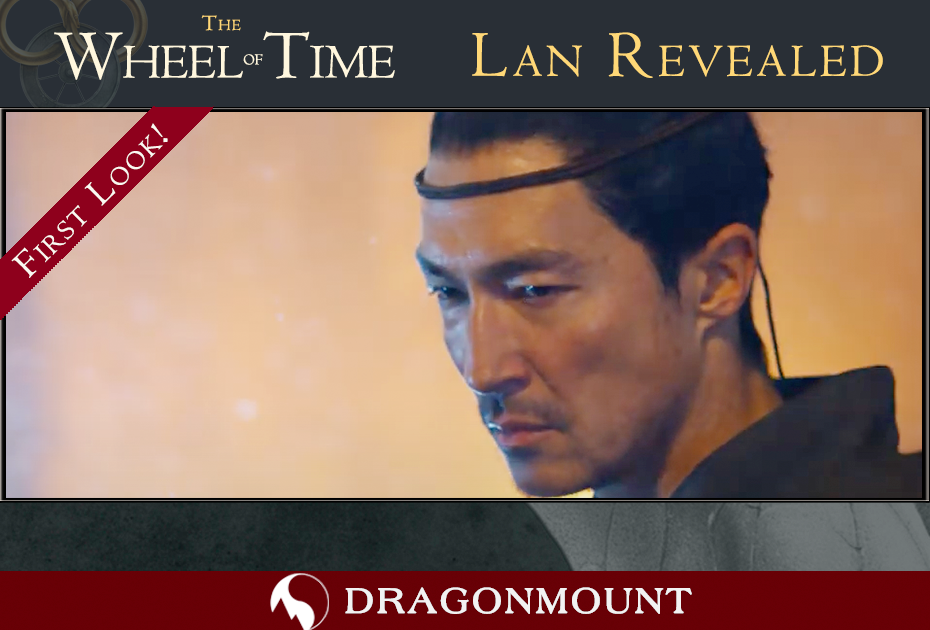
Amazon Prime revealed a first glimpse of actor Daniel Henney as the Lan Mandragoran in the upcoming Wheel of Time TV show. They revealed a 6-second video via their official social media accounts and YouTube: Official Video description: This is the second official character reveal that the show has provided. Back in March they revealed Rosamund Pike as Moiraine through a brief video. Tell us what you think of the video in the comments below or on social media. Learn more about Amazon's Wheel of Time TV show.
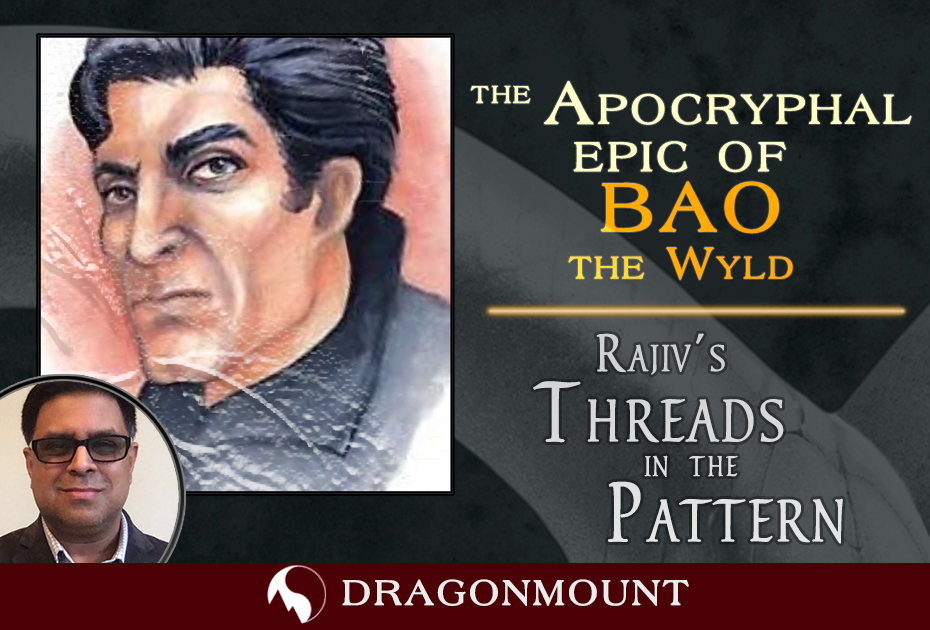
Rajiv Moté is Dragonmount's book blogger with a lens on the craft of fiction writing. When he's not directing software engineers, he writes fiction of his own, which can be found cataloged at his website. SPOILERS for all things related to Demandred. One of the most dramatic and exciting single-book plot arcs in The Wheel of Time was in Lord of Chaos. Rand al’Thor announces an amnesty for men who can channel the One Power, and a rag-tag group of untrained men, young and old, answer the call. The amnesty also attracts Mazrim Taim, a False Dragon who is cool and confident enough in the face of the Dragon Reborn to propose an equal partnership. Instead, Rand puts him in charge of training the assembled men, and over the course of the book, those men acquire skill, uniforms, ranks, the name “Asha’man,” and an institution: the Black Tower. By the end of Lord of Chaos, they become an elite military unit, rescuing Rand from captivity and crushing both renegade Aiel and Aes Sedai. The balance of power shifts, and the world suddenly becomes more unpredictable and dangerous. The novel is bookended by our first point-of-view sequences from the mysterious Forsaken Demandred. At the beginning, the Dark One summons him to Shayol Ghul to receive secret instructions, and at the end, revels in his apparent success. This framing, along with the details of Mazrim Taim’s mannerisms, made it clear to readers that Demandred had replaced Mazrim Taim and was now in command of Rand’s most powerful army. Robert Jordan’s notes (24:00) confirm that this was the original plan. But sometime before Winter’s Heart, Jordan changed his mind. The details that were originally foreshadowing became red herrings. There’s a burden when using red herrings to mislead readers. The eventual payoff has to be more satisfying than what readers were led to believe. That was a challenge Brandon Sanderson had to take up when he finished the series. When Demandred, calling himself Bao the Wyld, explodes onto the stage in A Memory of Light, he is the most formidable--and most prepared--of the Forsaken. His army of Sharans has the same sort of loyalty as Rand’s Aiel. Their use of the One Power reflects their leader’s long experience of Powered warfare. He wields a sa’angreal mightier even than Callandor. He shows the discipline and focus of a master martial artist, and the skill of the world’s greatest swordsman who does not underestimate an opponent. The rest of the Forsaken look positively frivolous compared to him. What’s better than Demandred in control of Rand’s Asha’man army, disguised as Mazrim Taim? Demandred in control of Rand’s Asha’man through his protégé Mazrim Taim, while bringing into battle another army nobody had foreseen. Fans of The Wheel of Time should consider “River of Souls,” published in the Unfettered charity anthology, essential reading. The short story is a deleted sequence from A Memory of Light set in Shara. It establishes Demandred’s leadership of the Sharans by putting him on a quest to win a missing part of D’jedt, a sa’angreal second only to the Choden Kal. It hints how Demandred became the Sharan’s foretold savior: the Wy-eld. The Dragonslayer. The Demandred pivot from Mazrim Taim to Bao raised questions. How did he command real loyalty, instead of the Compulsion- and deception-based obedience for which his colleagues settled? How did he mobilize the secretive, isolationist Sharans into an army willing to march on a foreign land under the banner of the Shadow? What has this man been up to for the last two years that made him so different from all the other Forsaken? “River of Souls” is an amazing piece of craft. In the space of a short story, it sketches--through allusion and parallels to Rand’s story--an entire epic fantasy running concurrent to The Wheel of Time. As Bao, Demandred had a heroic epic of his own. Demandred nearly falls in love, nearly has friends, and nearly has an arc similar to Rand’s. But instead of learning the hard lesson of reclaiming his humanity by embracing “laughter and tears,” he allowed darkness and hardness to rule him. In his foreword, Brandon Sanderson says that “River of Souls” accomplished its goals too well by introducing too many new elements at the end of a story, and giving a taste of something that will never be sated, setting up too many unfulfilled promises. Bao the Wyld would never get the epic teased by “River of Souls.” It’s a fascinating and insightful calculus. A series has a structure, just as a novel does, and there are things you can’t do when you’re closing a series compared to when you’re opening one. Just as the end must pay off promises made in the beginning, revelations in the end that were never raised as earlier questions feel superfluous, no matter how entertaining. “River of Souls” offered a glimpse at a culture that has a fundamentally different view of the Pattern (the Tapestry, in their parlance) and the Dark One. To Sharans, fate was a shackle, and a victory of the Shadow meant liberation from the repeating destinies that the Wheel wove into the Pattern. The Wheel of Time gives few convincing reasons for a person to pledge themselves to the Dark One, but the Sharans offer a look at a belief system that values self determination over fate, which is the Father of Lies’ promise. But up until A Memory of Light, there was never a question of why an entire culture would follow the Shadow. “River of Souls” sets up Demandred as the most developed and complex of Rand’s adversaries, a more direct opposite number to Rand than Ishamael/Moridin. Perhaps in this, it also succeeded too well. The idea of an anti-Rand, fulfilling prophecies, changing societies, and nearly being a hero on his way to the Last Battle is compelling symmetry. The Wheel of Time contained enough chapters entitled “Threads Woven of Shadow” that it’s not hard to imagine an anti-ta’veren in the Wheel’s cosmology. But Team Jordan’s mission was to finish a story, not launch new directions. The epic of Bao the Wyld must remain apocryphal. “River of Souls” was a great story that came at the wrong time.
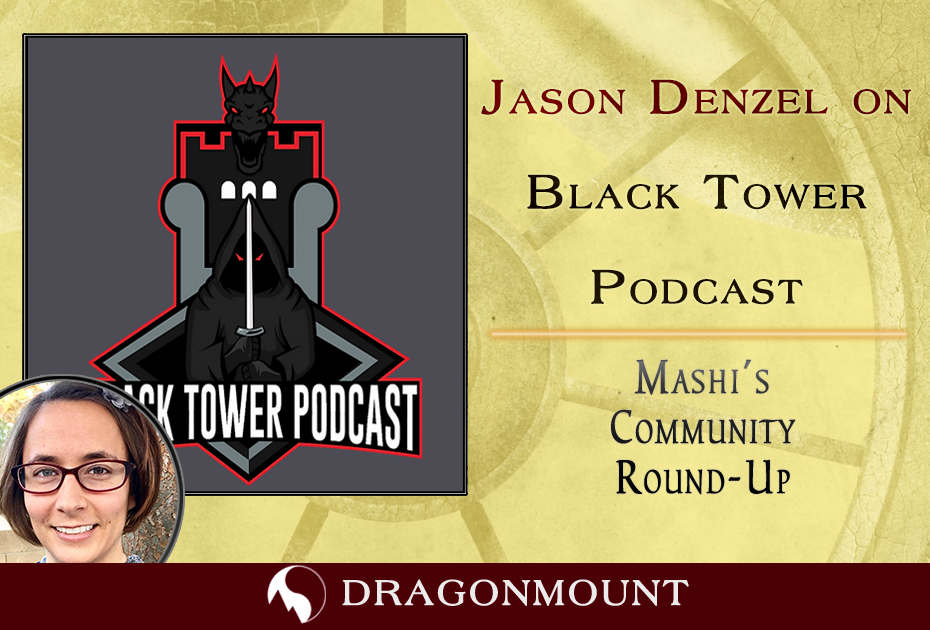
Our very own Jason Denzel joined the hosts Andrew, Daniel, and Josh of Black Tower Podcast to talk about The Wheel of Time, Jason's relationship with Robert Jordan, and hopes for the coming Amazon Prime television show. You can find out more information on Black Tower Podcast on their website. Subscribe to their YouTube channel to stay up-to-date on all their shows!
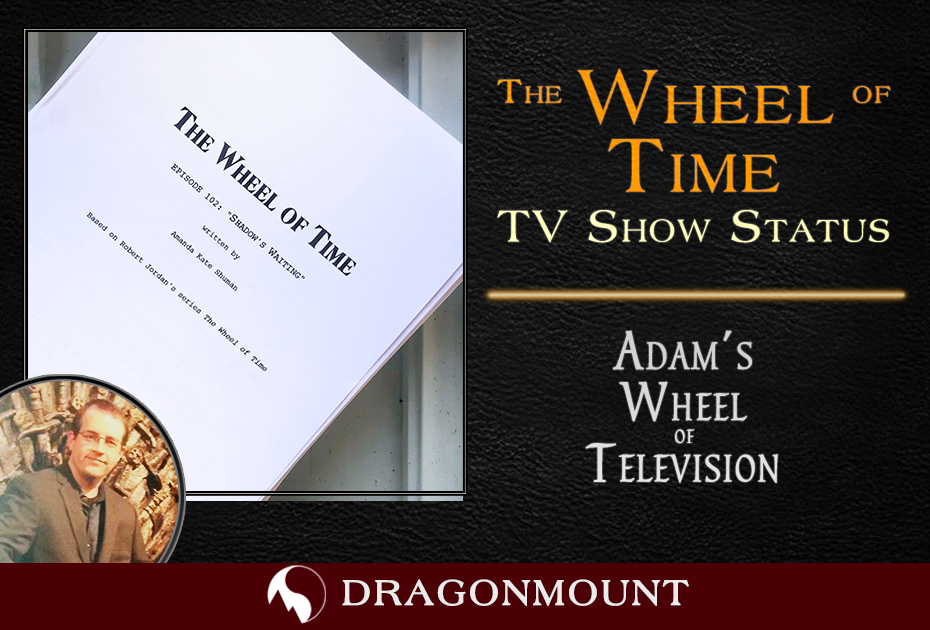
For those of us waiting for the Wheel of Time television series to arrive, the wait is starting to feel a bit interminable. Production on the first season began almost two years ago and we still don’t have a final air date or even a full-length trailer, although Amazon have started recently posting very short clips to kick off the marketing excitement for the show. At this point a recap of the status of the show might be in order. A Wheel of Time adaptation, based on the fourteen-volume book series by Robert Jordan (published between 1990 and 2013), has been in the works for over twenty years. NBC, Universal and a Japanese animation company all took various tilts at the idea before finally Sony Television brought the project to life in conjunction with Amazon. Showrunner Rafe Judkins, a veteran of shows such as Agents of SHIELD and Chuck and a lifelong Wheel of Time fan, has adapted the show with a team of scriptwriters from the fields of television, film and stage plays. Robert Jordan’s widow and editor, Harriet McDougal, and author Brandon Sanderson, who completed the novels after Robert Jordan’s sad passing in 2007, are advising on the project, as is Wheel of Time superfan Sarah Nakamura and Maria Simons, one of Robert Jordan’s researchers and assistants. Production of the show is based in the Czech Republic, with filming studios in Prague serving as the primary base for shooting. Location filming has taken place across the Czech Republic and also in Slovenia and Spain. The first season consists of eight episodes and will adapt the first novel in The Wheel of Time series, The Eye of the World, although some story elements from other novels may be introduced earlier than anticipated, and some storylines, locations and characters from The Eye of the World have been dropped for time or cost reasons, or delayed until later seasons and storylines when they have more to do. With the show unlikely to last fourteen seasons, it is likely that the show will take a somewhat looser approach to adaptation than, say, the Lord of the Rings movies or the early seasons of Game of Thrones. The show’s production has been, regrettably, extended by the COVID-19 global pandemic. Six of the eight episodes had been shot to completion when the Czech Republic imposed a lockdown on filming in March 2020. Shooting was able to resume in early September, but shut down again in November when a second wave – and, for the Czech Republic, a much worse one – of the pandemic hit the country. Some additional filming did take place in December in Spain. The current status of the show is that the overwhelming majority of footage needed for the first season has been shot and is in the bag, and the vfx and post-production teams are hard at work on inserting music, sound effects, CGI and graphics for the final product. However, several scenes from the last two episodes remain to be shot and it sounds like they need to be finished off before the season can be said to have fully wrapped and a release date set. There are some rumours that the production team may be able to shoot the last footage they need in the next couple of months, opening the way for the show to air in late 2021 through to early 2022, but that has not yet been confirmed. Of course, The Wheel of Time is not the only fantasy show to be adversely affected by the pandemic. The second season of Netflix’s The Witcher had a similarly protracted filming period, with repeated shutdowns due to COVID outbreaks in the UK and even among the cast and crew (a problem that Wheel of Time at least seems to have dodged). Fortunately, that show was able to conclude its filming last week and now seems firmly on track to air later in the year. The Wheel of Time does have a slight issue in terms of internal competition. Amazon Television is also producing a Lord of the Rings TV series based on the forging of the Rings of Power, set in the Second Age of Middle-earth (roughly five thousand years before the events of The Lord of the Rings itself). Filming in mostly COVID-free New Zealand, the show has largely escaped the delays and problems that have beset Europe-based productions. Filming is expected to continue for some months, but some reports and rumours suggest that the show is filming its first two seasons back-to-back, and filming of the first season material may have already concluded and be in post, with a view to airing in very late 2021 or early 2022. That could lead to a time issue where Amazon are perhaps reluctant to air two superficially-similar epic fantasy TV shows in the same window (and with both shows likely to air weekly, maybe simultaneously), resulting in further delays to one of the projects. That’s only a theoretical issue for now, but one to keep an eye on if the delays continue. The wait is of course frustrating, but we can hope that the end product will be worth it. In the meantime, keep an eye on Dragonmount’s news page and casting page for the latest developments.
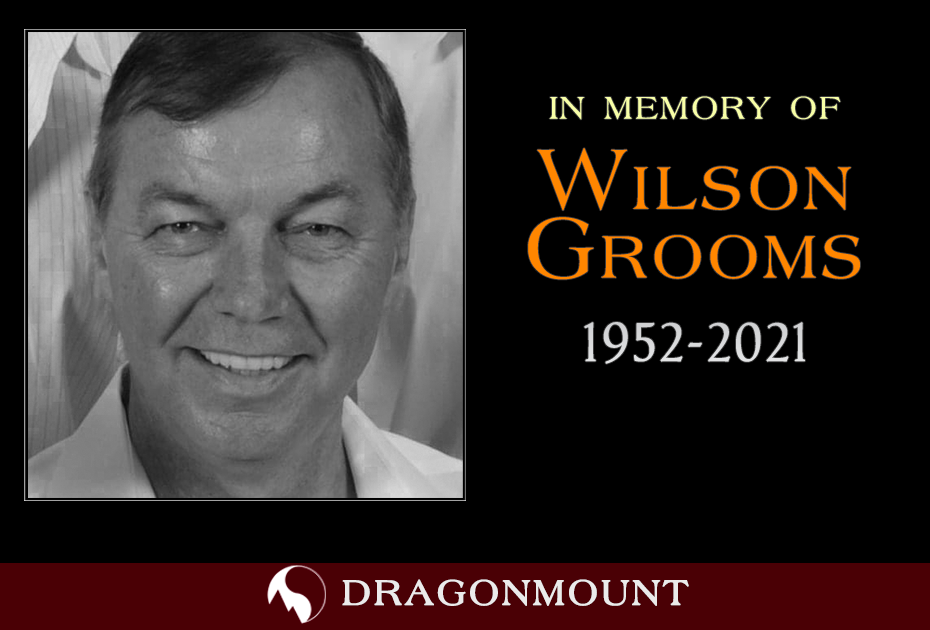
We are devastated to learn of the passing of Wilson Grooms, who died peacefully at home after a courageous battle against cancer. Wilson was Robert Jordan's cousin although they referred to each other as brothers. It was Wilson who guided the WoT community through the sad days when RJ passed away in 2007. Since then Wilson has been a pillar of our fan community. He will be missed dearly. Sending love to Wilson's family including his wife Janet, and his daughter Marisa, and their sons Miles and Jonathan. Rest in peace, Will. You always said you'd give "the big fella" (RJ) a hug for us when you got there. I'm sure he's got one waiting for you as well. Here is the statement from his family:
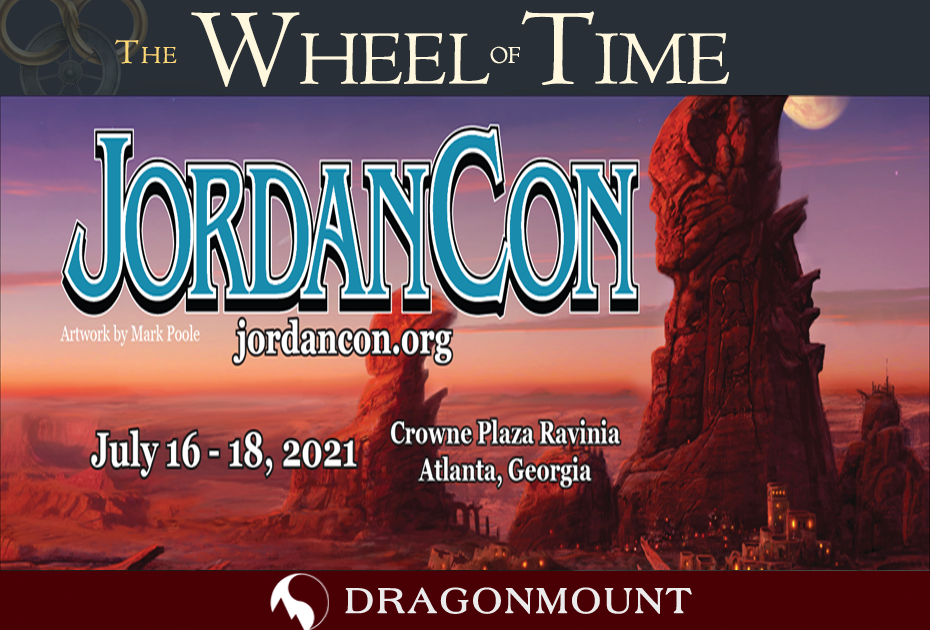
Good news, everyone! JordanCon announced earlier today they are hosting an in-person convention over the summer! Details are still being solidified, but we can confirm a few things: JordanCon 2021 will be held July 16th through the 18th at the Crown Plaza Ravinia in Atlanta, Georgia. All attendees, staff, guests, and volunteers are required to have the COVID-19 vaccine. Masks will be required during the event and CDC guidelines will be observed. More details are coming soon, but this is an amazing opportunity to see our fandom family and keep JordanCon going strong! To read the rest of the JordanCon 2021 FAQ, you can click here.
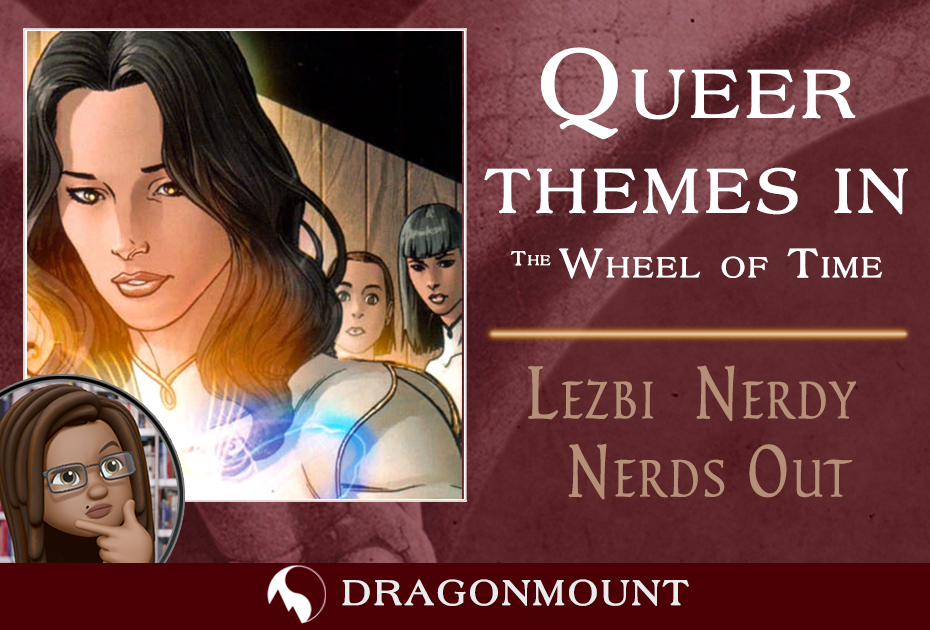
Recently, as has become tradition, along with the Wednesday Wheel of Time TV show teaser, Rafe Judkins answered some fan questions about the show. In amongst his answers was one that, while I fully anticipated his answer, I was still pleased to see. A fan asked him if there would be LGBT representation in the show, and in response Rafe said “there is rep in the books and the show”, and alongside his response, he included both the gay flag emoji and the trans flag emoji. This was a very heartening response, in particular the inclusion of the trans flag. As some of you may know if you watch my videos, I have long said that I think the show will need to include trans characters, not only because more diversity that reflects reality will only serve to deepen the world that Robert Jordan created, but I think the very nature of the magic system practically begs the question of where and how trans people fit into this world. But when I read Rafe’s response, I couldn’t help but think about the queer representation that exists in the book and how… lacking it is. And I mean that more than numerically, although simply statistically speaking, the number of characters that are canonically queer is way lower than they should be if the story is actually reflecting reality. And it is noteworthy that of the queer characters that Robert Jordan himself included, not a single male queer character exists. The gay male characters were written in Brandon Sanderson’s final three books of the series. When people talk about queer characters in the books, the term “pillow friends” gets mentioned quite a bit. But, for the most part, the pillow friends that Robert Jordan wrote about were not particularly queer. Their time of having romantic/sexual relationships with people of the same gender (again, exclusively between women) does not read to me as truly queer. It reads to me as the “just a phase” that often gets thrown in the faces of queer people when we come out. These women have sexual encounters with each other during times when men are not available to them, but when they are once again able to interact with men, they naturally move away from their relationships with women to the more ‘mature’ relationships with the opposite sex. In fact, it is rather explicitly hinted at in the narrative, that these ‘pillow friend’ relationships are an expression of an immature sexuality – something I can tell you from firsthand experience is a real thing that used to be said (perhaps still is). That everyone goes through a homosexual phase of attraction, but you’re supposed to mature out of that. Gay people are supposedly stuck in that immaturity. I do not know if Robert Jordan actually believed it, but he did include this very odd and inaccurate narrative about queer people in his books. And this is not even speaking of the women who, in canon, are shown to be exclusively attracted to other women. Recently, when discussing these women with a friend, I described it as “his representation of lesbians reads like a man who has heard tell of lesbians via legend and myth”, an analogy I was quite proud of, given the themes of myth and legend that run through these books. The lesbians in these books are angry, cruel women who hate men and/or want to be just like men. Their desires seem more focused on what they don’t like than what they like… it is lesbianism defined by its relationship to men, and how it is perceived by men. I do not expect every queer woman in these books to be a paragon of virtue, far from it, but when every example of a specific group of people is painted with the same brush, it ceases to be a personality trait, and instead is a stereotype that should be examined. And of course, this isn’t even touching on the “trans representation” that exists within the books. I put that in quotes because whenever I bring this topic up, the character Halima is mentioned, but I feel that Halima is evidence that Robert Jordan was…ill-informed, to put it mildly, on the subject of the transgender experience. I, myself, do not think I am an expert by any means, but it is easy to see how Halima is almost a personification of the very 90s (and probably decades earlier, but I remember this from the 90s) fear that straight men had that transgender women were going to somehow ‘trick’ them. Halima’s whole plotline revolves around deception, and they revel in the knowledge that they are fooling people, despite the fact that being in a female body is a punishment for them. Additionally, many things in Halima’s narrative indicate that Robert Jordan appeared to think he was describing the experience of a trans woman. While there are many trans people who reject the ‘born into the wrong body’ narrative, the experience of being a female soul forced into a male body would be more akin to the experience of many trans men, not trans women; something I know from multiple conversations on this topic is a point of confusion among fans. If, in fact, Halima was Robert Jordan’s attempt at trans inclusion, then, much like the lesbian representation, Halima is a character created by someone who seemed to not understand the group they were attempting to represent. All of this to say that yes, there is queer representation in the books, but I am hoping for more from the show. But, beyond the queer characters in the books, I think that there are queer themes layered throughout the story. I don’t think it is possible to know if these themes and moments are intentional, but I know that as a queer person reading this series, there are moments that likely resonate with me differently than they would a straight person. The first of these moments for me comes in Eye of the World. Our party has been separated by Mashadar at Shadar Logoth, and Nynaeve has found herself joining with Moiraine and Lan. And at this moment, Moiraine reveals that Nynaeve can channel. And here we get to see Nynaeve stripped of the mask that she wears to protect herself, and she is vulnerable for the first time. Moiraine has exposed this truth that Nynaeve desperately wants to not be true. That desperation that Nynaeve feels, the way she wrestles with it, sees the obvious truth in it, all while hating it and trying to deny it. That moment feels so familiar to me. And when she quietly asks Moiraine to not tell anyone, my heart breaks for her. The shame that Nynaeve feels in that moment, I know that feeling, I wore that feeling for so much of my life. And then there is Egwene. It never occurred to me to read a queer theme into Egwene’s storyline until I had a chance to interview Enn and Matt from the Cool Story Podcast (A Wheel of Time New Reader podcast), and Enn spoke of reading queerness in Egwene. Egwene is, to me, the inverse of Nynaeve. Nynaeve reflects my early journey, I was a person with a secret that was so deep, I sometimes was able to hide it from myself, and when it came to the surface, I tried so hard to suppress it. I was prepared to live my entire life denying this part of who I was, or at least I thought I was prepared to do that. Egwene, on the other hand, her story reflects the story of the brave kids that know and accept who they are, and know that if people don’t accept them, that’s their problem. Egwene does not know that she can channel until Moiraine reveals it to her, but from the moment we meet her, she knows that the Two Rivers is not enough for her, that she is destined for more. It is the story of so many gay kids growing up in places where they not accepted, and they are eager to strike out on their own, move to ‘the big city’, where they can finally be their full and complete selves and come into their own. In that same interview; Matt, the other host of the Cool Story Podcast, mentioned seeing queerness in Perrin’s storyline, something that feels so obvious to me now that I can’t believe I didn’t see it before. One of the most frustrating things, to me, in Perrin’s character arc, is his indecisiveness when it comes to his relationship with the wolves. He will accept them, and then block them out, and then embrace them, and then suppress them. As a reader, I find myself so frustrated that he can’t commit to moving forward with this part of his identity. But when Matt brought this up, I couldn’t help but look back on my own journey with accepting myself as a gay woman, and the multiple times I came out and then went back into the closet. I imagine that if anyone had been reading my story as a narrative, they would have been equally frustrated. Now, when I think of this aspect of Perrin’s character arc, I identify with it. It is realistic. There are beats in there that are, once again, depressingly familiar. When Perrin “comes out” to Ingtar, he expects rejection, or even to be accused of being a darkfriend. Ingtar’s reaction is not rejection, but it is not full acceptance either. He urges Perrin to pretend to be something other than his true self, because the others will not understand. This is, almost verbatim, what I heard from several members of my family when I began to come out to them. There is also, for me, one of the biggest ways I see queerness in the story – the ability to channel itself. Often, when talked about, the ability to channel is said to be akin to an addiction. I do think that this is an accurate analogy for channeling as described in the books, but I personally see it as more akin to sexuality. I do not mean that in a salacious way at all, I am not likening channeling to the act of sex, but instead to sexuality as a part of one’s identity. Part of this, I do feel, is very deliberate in the narrative. The way the ‘spark’ is discussed as happening earlier in women than men, the steady growth rate of ability in women versus the sporadic nature of the increase in strength in the power with men, it is an obvious parallel to physical puberty. However, it is more than this parallel that strikes me with the ability to channel. In fact, for me the aspect of channeling that most resembles sexuality is the fact that once you start channeling, you will continue to channel, it is inevitable. This feels like a reflection of the truth that you cannot deny who you are. As I mentioned previously, I came out multiple times before finally fully embracing who I was. Each time I went back in the closet, I was determined to be straight. I was certain that I could do it. But it was impossible. Experiencing even the briefest moments of being honest with myself and others made living in the closet impossible. There is also the way that people react to being gentled or stilled - they lose their will to live. Again, this is a feeling I am well acquainted with. When something so central to who we are as people is being buried, and you are expending so much energy lying to yourself and everyone around you, it is exhausting, and it can make it hard to see any beauty in the world. So, when I read these books, and see Logain, walking around the Tower grounds, dejected and empty, I understand what he is feeling and it resonates with me. And finally, there is Rand. I think it is impossible to talk about queer themes in these books and ignore this aspect of his storyline. Rand, much like Perrin, has a part of himself that he wants to reject and hide. But, unlike Perrin, Rand has no choice. He cannot reject his ability to channel because he has ‘the spark’, and he cannot hide because he is the Dragon Reborn. And he knows that men like him hurt and kill people around them, and if they aren’t stopped, they rot to death. It is a horrible fate. This aspect of his story very much mirrors the experience of living through the AIDS epidemic, the stigma that people living with HIV/AIDS had at the time - and in many places still do. The fear that just by existing, these men would cause harm to those around them, and eventually die in a very undignified way. And unlike the previous moments or story arcs I mentioned, I feel fairly confident that this one is intentional. Given when Robert Jordan started writing this series, the fact that the taint and its effects are very gender specific, and knowing that, at the time HIV/AIDS was thought to be a gay male disease, the parallel is almost too perfect to be accidental. Earlier, I criticized Robert Jordan’s portrayal of queer characters, but I do very much believe that his missteps were borne out of ignorance rather than malice. I always want to acknowledge his good intent, and I do very much believe his intent was good. And in this part of Rand’s story, and the story of male channelers in the Wheel of Time, I see this good intent. I see Robert Jordan exploring the journey of a character who, through no fault of their own, finds themselves “infected” with something that everyone fears, and no one understands. No one can help him, many won’t even try, and he has to figure it out on his own. And in light of this interpretation of this aspect of Rand’s story, I think it is beautiful and hopeful that part of his journey includes the cleansing of the taint, and the ultimate acceptance of men who can channel. So, while the queer representation in the books may have fallen short for me, these are the moments where I was able to read queerness into this series and find my story and the story of those like me in this world that I love. Are there moments for you that resonate in a way that may not be common among the fandom? Leave a comment and let me know!

JordanCon has been a staple--if not the staple--in the Wheel of Time fandom since its founding in 2009. The outbreak of COVID-19 canceled the event in 2020 and the tentatively scheduled weekend in April 2021, causing the non-profit organization is calling on fans for assistance. A GoFundMe has been set up for JordanCon, a 501c4 charity, to help off set the costs associated with canceling the event and to help with planning any future conventions when it's deemed safe enough for us to congregate. On the GoFundMe site, JordanCon states: "JordanCon is a tax exempt 501c4 non-profit organization that holds a yearly sci-fi and fantasy literature convention to honor the late Robert Jordan by supporting the Mayo Clinic. But we're also so much more than that. JordanCon is a family of incredibly diverse people who come together to celebrate not just their love The Wheel of Time, but also the many lifelong friendships they've made over the years. JordanCon often feels more like a family reunion than a convention, and we wouldn't have it any other way. But Covid-19 stopped us from gathering last year, and we all felt the effects. We weren't just missing an event (though the event itself is fantastic); we were missing each other. JordanCONine allowed us to interact as much as we were able, but we missed the hugs, the high-fives, the dancing, the costumes, the panels, the… the things that make JordanCon so special. We missed being together in one big space, enjoying our favorite weekend of the year as a family. Now 2021 is here and it's clear that Covid-19 is going to continue to cause disruptions for events and organizations moving forward. We already had to postpone our usual weekend in April, and now we're working hard to try and figure out how to continue to bring you the best JordanCon experience we can. But we can't do that alone; we can't do it without our family. So as much as we didn't want to ask, especially since we know many of you are hurting financially during this time, we find ourselves in a situation where our operating costs are much higher than they've ever been. Like many organizations, especially non-profits, we're worried about the future. JordanCon doesn't make money. We've always focused on using the funds we receive to make the convention fantastic, and more importantly, to support charities such as the Mayo Clinic. Because of that, we don't have an emergency fund. And who could have possibly anticipated a global pandemic and the increased operating costs associated with it? If you can't afford to help financially, we completely understand. Times are hard. But if you have some money to share, we would definitely appreciate any help you're able to give. We just want to make sure we can keep hosting this incredible family reunion (that is technically a convention) and donate to charities like the Mayo Clinic for as long as we possibly can." There's a fantastic list of rewards for those who can contribute! If you can, please donate to this cause and help us keep this family get-together going strong!
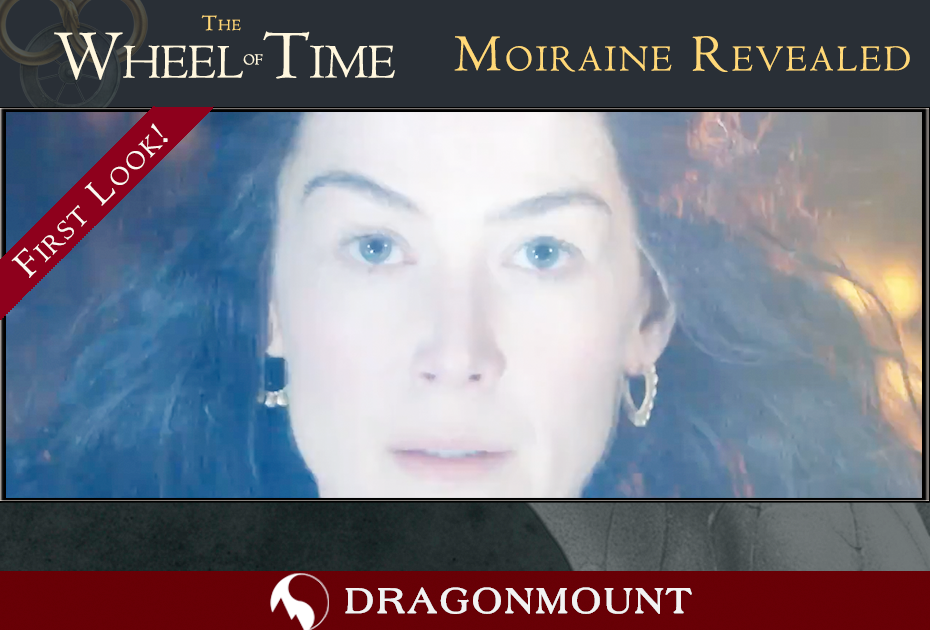
Amazon Prime revealed a first glimpse of Rosamund Pike as the iconic character Moiraine Damodred in the upcoming Wheel of Time TV show. They revealed a 5-second video via their official social media accounts and YouTube: This is the first official character reveal that the show has provided fans. Tell us what you think of the video in the comments below or on social media. Learn more about Amazon's Wheel of Time TV show.



